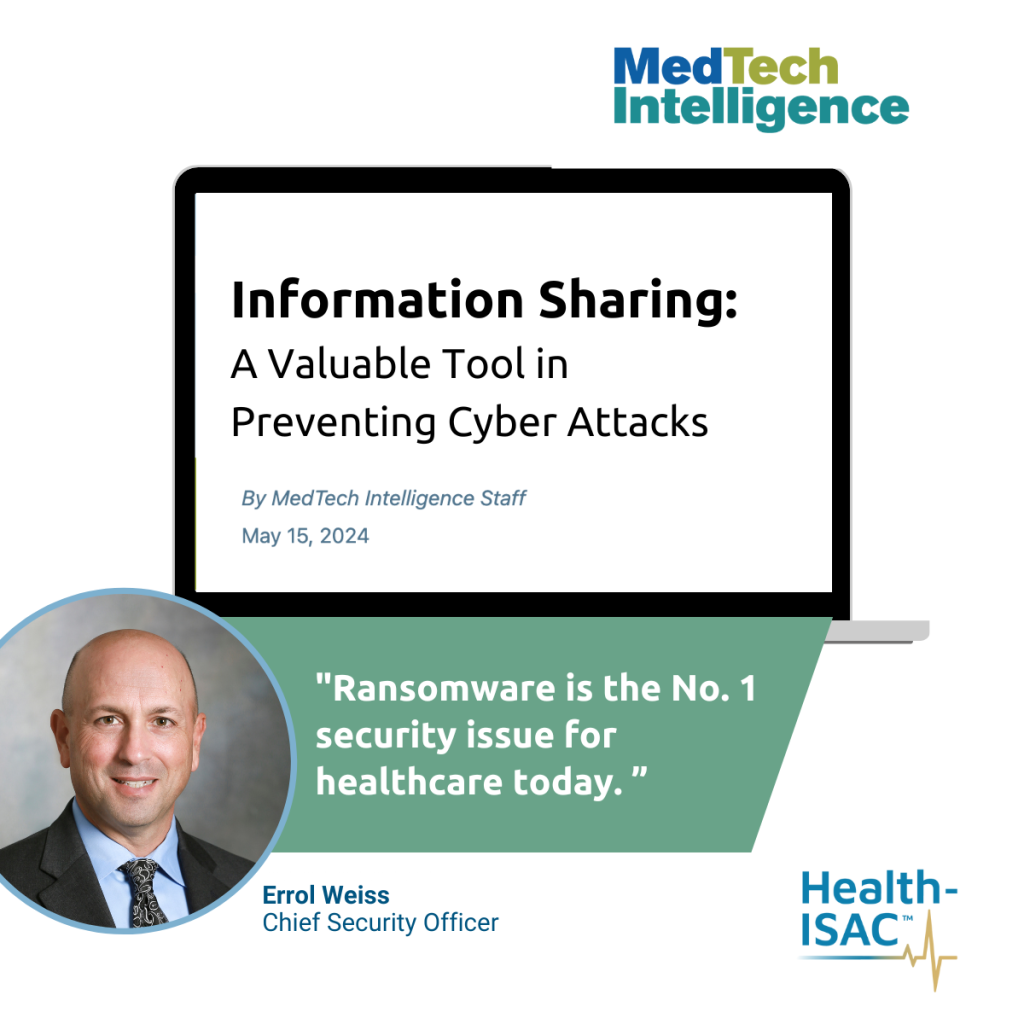As ransomware attacks continue to plague the healthcare industry, information sharing has become a valuable tool in the fight against cybercrime and physical threats to the nation’s critical infrastructure. We spoke with Errol Weiss, Chief Security Officer of the Health-ISAC. Here, we discuss the history of ISACs, tools available to support member companies and emerging threats.
Read the full interview in MedTech Intelligence here:

The takeaway on the ransomware is that it is the No. 1 security issue for healthcare today, but it is also an issue across all the critical infrastructures now. In 2023, the Health-ISAC was tracking all of the ransomware events where victims were being named. We had 3,743 events last year that were tracked, only 304 of them were in the healthcare sector.
When ransomware hits a hospital system, it becomes a very human level tragedy very quickly. Hospitals can’t deliver care and they’re diverting ambulances to other hospitals because they can’t accept new patients. Procedures are canceled. People are told to stay home and wait it out, so there is a real human impact that we can all relate to. As a result, when these attacks do happen in this setting, they become very big stories. The numbers are telling me that it’s happening in every other sector as well. We just don’t tend to hear about it as much because it’s not creating headline news.
To answer the question, ransomware is all about money. They don’t care who they’re attacking. They are opportunistic. They launch attack and often don’t know who they’re attacking until they start getting victims. Then they look at the telemetry to figure out who they have access to. Once they figure out who they have access to, the next step is to figure out how big of a ransom they think they can get from that particular victim.

